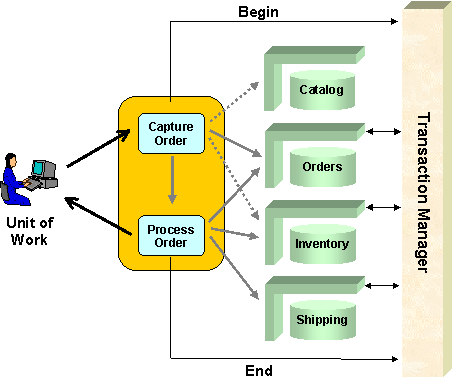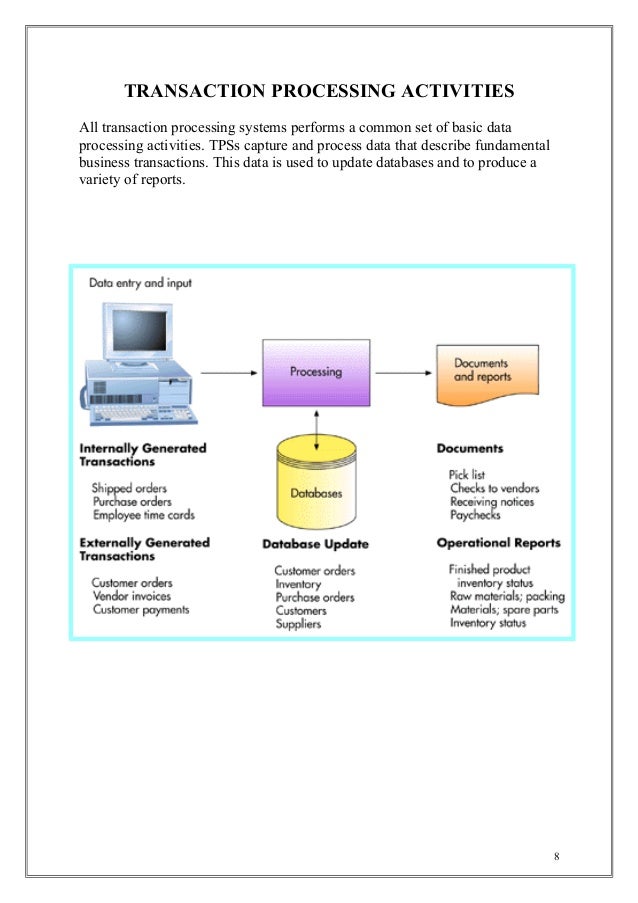


Examples of real time processing are ATM’s. Real Time Processing Real time processing is where all details of the transaction are recorded and changed at the time as it occurs. Batch processing is useful for enterprises that need to process large amounts of data using limited resources Batch Processing system An example of batch processing is paying by cheque. Types of TPS Batch processing is where the information is collected as a batch and then processed later on. Durability - Once a transaction completes successfully (commits), its changes to the state survive failures. Isolation - Even though transactions execute concurrently, it appears to each transaction T, that others executed either before T or after T, but not both. The actions taken as a group do not violate any of the integrity constraints associated with the state. Consistency - TPS systems exist within a set of operating rules (or integrity constraints). These changes include database changes, messages, and actions on transducers. Qualifiers Atomicity - A transaction’s changes to the state are atomic: either all happen or none happen. Qualifiers In order to qualify as a TPS, transactions made by the system must pass the ACID test. It may be used many times each day which means it has to be precise and inflexible Controlled processing – maintain specific requirements for the roles and responsibilities of different employees. The field of transaction processing, therefore, has become a vital part of effective business management įeatures of Transaction Processing Systems Rapid response – fast performance with rapid results Reliability – well designed backup and recovery with a low failure rate Inflexibility – treat every transaction equally. The success of commercial enterprises depends on the reliable processing of transactions to ensure that customer orders are met on time. What is TPS? Definition: A Transaction Processing System (TPS) is a type of information system that collects, stores, modifies and retrieves the data transactions of an enterprise. The real-time transaction is also a type of TPS in which no delay in time occurs.Īs most of the work is carried out by TPS so less staff is needed to be hired.Transaction Processing Information System Presented by : Uday Sharma The transactions are carried out in fast time and there is no delay. Also, customers get more trust and satisfaction in the company. Advantages of transaction processing system (TPS)īy using TPS, the staff of the company increases their productivity. You can use a credit/debit card to make any transaction on the online store.Īs you have now little understanding of TPS so let’s discuss some pros and cons of TPS. You can also buy things online from any website or online store and that online store also uses online TPS for managing its products. The person who comes first in TPS gets their seat first. All the transactions are carried out in real-time. No ticket or seat is reserved by multiple people. You buy a ticket through online TPS where only one person buys a ticket at a given time. Another example of TPS is online buying of railway or bus tickets.


 0 kommentar(er)
0 kommentar(er)
